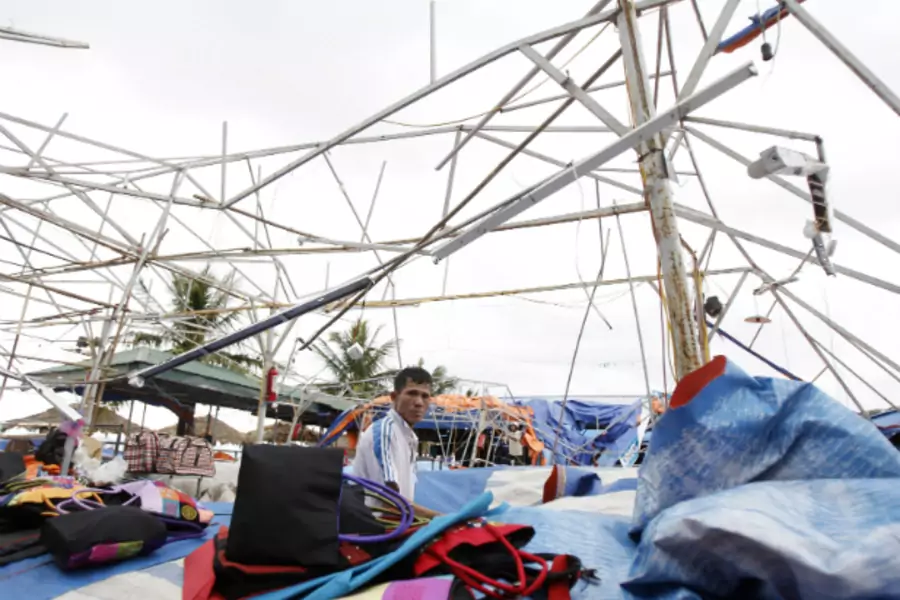Why Was Vietnam Better Prepared Than the Philippines for Typhoon Haiyan?

More on:
Over the past week, as aid trickled and now is flowing into the Philippines in the wake of Typhoon Haiyan, some broader questions about the country’s preparedness—or lack thereof—have arisen. Although it would be unfair to compare the Philippines, a country with a GDP per capita of around $2,600, with richer countries hit by natural disasters (such as Thailand in the 2004 tsunami), it is worth asking why the Philippines seemed much less prepared for Haiyan than neighboring Vietnam, a country with a GDP per capita of only $1,600. Although the typhoon also passed through Vietnam, albeit after slowing down somewhat over the water in between, Vietnam suffered fourteen deaths, as compared to what appears to be thousands of fatalities in the Philippines.
Vietnam managed to evacuate over 800,000 people well before the storm hit; the total number of people who evacuated in the Philippines prior to the storm remains unknown, but a sizable percentage of people on Leyte did not evacuate, a factor that surely increased fatalities.
What differed in the two countries’ preparations? To be sure, Vietnam is an authoritarian state where the central government retains far more power than in the Philippines, one of the most vibrant democracies in Asia. But well before the typhoon hit, Vietnam’s government already had labeled it the most serious possible emergency, making it easier for provincial officials to convince people to leave their homes. Philippines President Benigno Aquino III did not label the typhoon the most serious possible emergency, a categorization that would have allowed him to mobilize more resources and possibly force the evacuation of more people prior to landfall. In addition, those who were evacuated in the Philippines were moved only a few hours before the storm made landfall, leaving authorities little time to look for isolated or elderly people who might not have heard warnings or been able to follow them.
Vietnam’s buildings also simply seem to have been stronger; structures designated as storm shelters generally did not collapse, while those in the Philippines frequently did. This difference in the quality of building is a testament to the continuing serious problem of graft in the Philippines, where corruption siphons off funds for infrastructure and leads to shoddy work. Although parts of Leyte are regularly hit by typhoons that carry the risk of surges of water, the area had few significant water breaks; many buildings and roads were built with substandard materials, probably because contractors had to pay kickbacks.
Vietnam is hardly a model of clean government—the country was ranked among the most corrupt countries in East Asia last year by Transparency International’s Corruption Perceptions Index—but the Philippines is in many respects worse, particularly in areas of the country long under the control of family dynasties. Indeed, because Vietnam’s graft is more centralized, the government sometimes is able to overcome corruption within the Party, whereas in the freer Philippines a more decentralized kind of corruption is much harder to combat from Manila.
Finally, Vietnam appears to have more clearly studied government responses to past major disasters in Asia, including the 2004 tsunami and the 2011 earthquake and tsunami in Japan. This might seem somewhat surprising, given that Vietnam’s leaders are in many respects suspicious of interactions with other countries and highly opaque in how they run their government. Yet below the senior leadership, Vietnam boasts a relatively (for the size of its economy) qualified group of civil servants and diplomats, particularly in areas that are not politically sensitive, like disaster management. Although the Philippines does have some fine civil servants, particularly in prestigious jobs like the foreign ministry, the overall quality of the civil service is poor, in part because Filipinos with top-quality educations, which includes fluency in English, have more opportunities in the domestic private sector and overseas than educated Vietnamese.
More on:
 Online Store
Online Store